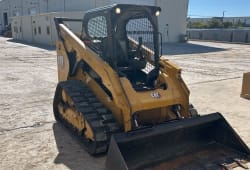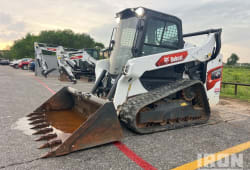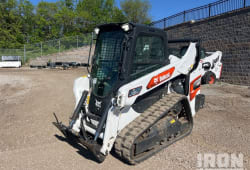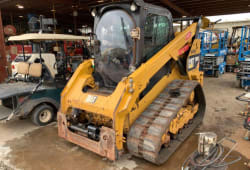How to Level Your Yard for Sod or Existing Grass: Manual vs. Heavy Equipment Methods
4 Min read
)
August 20, 2024
The leveling strategy changes based on whether or not the area has desirable grass or sod. If you want to maintain existing grass, you need a gentler approach, using shallow topdressing and gradual leveling over time to avoid smothering the grass. Core aeration can also help with soil settling and grass health during this process. Spot repairs are recommended for specific low or high spots, ensuring the grass remains intact. However, if you are starting fresh or laying new sod, you can be more aggressive-removing all old grass, regrading with heavy equipment if needed, amending the soil, and thoroughly leveling the area before installing the new sod. The fresh start allows for a more comprehensive leveling strategy since there is no need to protect existing grass.
Leveling Before Sod
Before laying sod, it's crucial to properly prepare the ground. Here’s a step-by-step guide on how to level a yard before sod.
1. Remove Existing Grass and Weeds
Manual Method: Use a shovel or sod cutter to remove existing grass and weeds.
Heavy Equipment: For larger areas, a rototiller or a skid steer with a sod removal attachment can be used to clear the land more efficiently.
2. Grade and Slope for Drainage
Ensure proper drainage by grading the yard away from structures. This usually means having a slope of about 1-2% away from buildings.
Manual Method: Use a rake to achieve minor adjustments.
Heavy Equipment: For larger or more complex areas, consider using a box blade, land plane, or a mini bulldozer to efficiently level the ground and create proper drainage slopes.
3. Till and Loosen the Soil
Tilling the soil helps loosen compacted soil, making it easier for roots to penetrate.
Manual Method: Use a shovel or garden tiller for small areas.
Heavy Equipment: For large areas, a rototiller attachment on a tractor or a compact track loader can make the job faster and more thorough.
4. Amend the Soil
Add soil amendments such as compost, sand, or fertilizer to improve soil quality based on a soil test.
Manual Method: Spread with a shovel and rake.
Heavy Equipment: A broadcast spreader can be attached to a tractor to evenly distribute amendments across large areas.
:format(webp))
5. Final Grading and Smoothing
Once amendments are added, regrade and smooth the surface to eliminate any bumps or dips. The goal is to have a perfectly even surface before laying the sod.
Manual Method: Use a lawn roller and rake.
Heavy Equipment: A landscape rake attachment on a skid steer or power rake can help get a smooth finish over large areas.
6. Water the Soil
Lightly water the soil a day before laying sod to ensure the ground is moist but not soggy. This helps the sod roots establish more quickly.
By using heavy equipment such as skid steers, mini bulldozers, or tractors with the right attachments, you can dramatically reduce the time and effort required for these steps, especially for larger yards.
Leveling After Sod
To level an existing yard that presently has grass, follow these steps:
1. Evaluate the Yard
Walk around and identify uneven areas, noting low spots, high spots, and drainage issues. Mark these areas for correction.
2. Mow and Dethatch
Mow the yard short to better see the uneven areas. If there is excessive thatch (dead grass buildup), dethatch the lawn using a rake or dethatching machine.
3. Prepare Topsoil or Sand Mix
Prepare a mixture of topsoil, sand, and compost (roughly equal parts). Sand improves drainage, topsoil helps growth, and compost adds nutrients. Sand is desirable for warm season lawns (bermuda grass, zoysia, st augustine, etc) and less desirable for cool season lawns (fescue, Kentucky blue grass, etc).
4. Fill Low Spots
Spread the soil mix into low areas with a shovel or rake. Lightly compact it and smooth the surface. For deep low spots (over 2 inches), work in layers to avoid smothering the grass.
:format(webp))
5. Level High Spots
For small high spots, you can remove excess soil and redistribute it. For large high spots, you may need to remove sod, excavate soil, and then replace the sod. Some have also used a pressure washer to lower high spots but this method is messy.
6. Rake and Smooth
After addressing low and high spots, use a garden rake to smooth out the surface, ensuring it's even across the yard. You can use a leveling rake to properly drag the leveling mix.
7. Water the Yard
Lightly water the leveled areas to settle the soil. Watch for additional settling and fill as needed.
8. Seed or Sod
If you’ve removed large areas of grass, reseed or lay new sod. Water regularly until the grass is established.
9. Monitor and Maintain
Over time, you may need to repeat this process as the soil settles. Regular maintenance helps keep the yard level and healthy.

Post acquisition of Boom & Bucket, the company he founded, Adam now leads Marketplace Growth for Ritchie Bros.














